Tree House Built Attached to Back of Aoutdoor Shed
DIY Treehouse Ideas and Helpful Building Tips
Advice and tips for building, attaching and furnishing your home in the treetops. Learn how to build a treehouse from experienced builders.
1 / 8
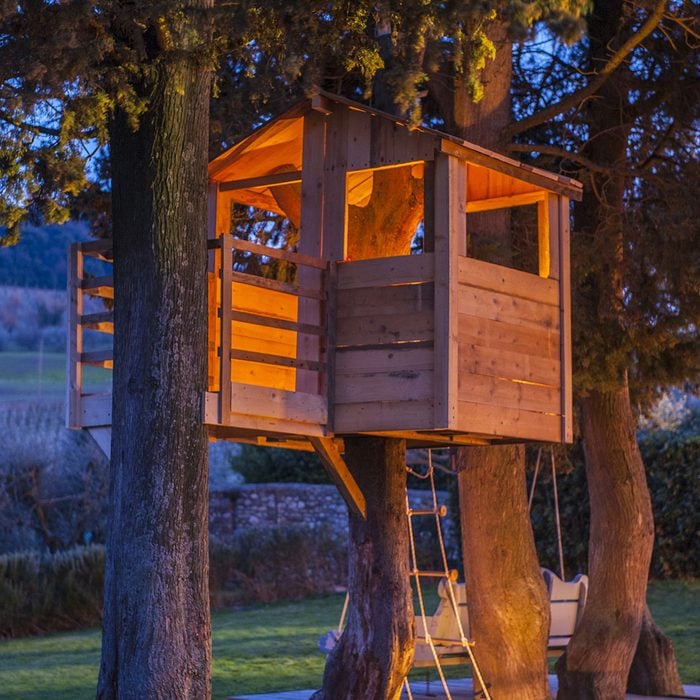 Maremagnum/Getty Images
Maremagnum/Getty Images
Where Should You Build a Treehouse?
When thinking about treehouse ideas, take stock of the trees in your yard. Choose a healthy, long-lived hardwood for maximum support, with load-bearing branches at least eight inches in diameter (larger if the species is a softwood). The best trees include maple, oak, fir, beech, and hemlock. It doesn't need to be too high, just high enough so nobody bumps their head when walking underneath it.
Does building a treehouse seem like biting off more than you can chew?
2 / 8
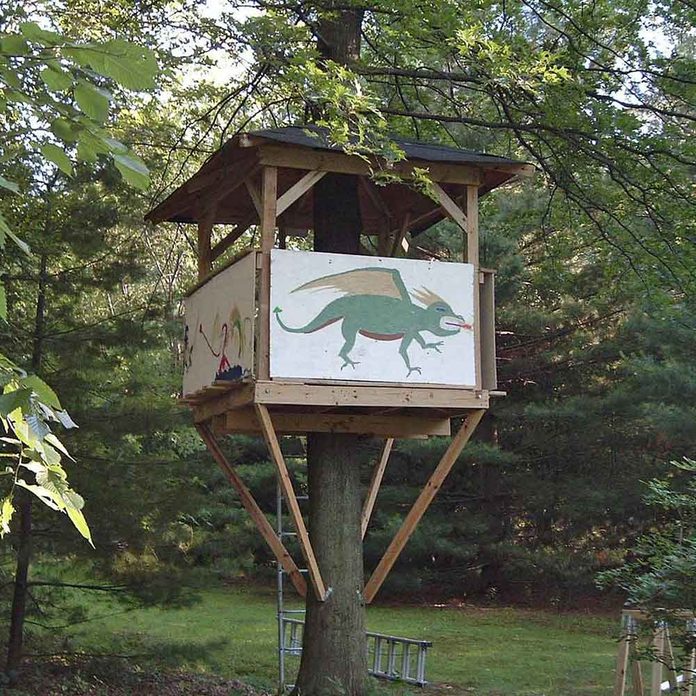 Photo courtesy of Sean Milroy
Photo courtesy of Sean Milroy
Keep Weight and Stability in Mind
While it's easy to get carried away with cool treehouse ideas, building a house in a tree brings with it certain physical limitations. Here are some structural things to keep in mind while designing your DIY treehouse:
- Build the platform as close to the trunk as possible, and add diagonal bracing for extra strength to support uneven loads.
- Put the load over the base of the tree, not on one side.
- For heavy tree houses, consider spreading the weight among several trees.
- A tree house will act like a sail in strong winds, adding a large load to the tree's roots. In high-wind areas, build your tree house in the lower third of the tree.
- When building on one main trunk, level the main platform by cantilevering the beams and supporting them from below.
3 / 8
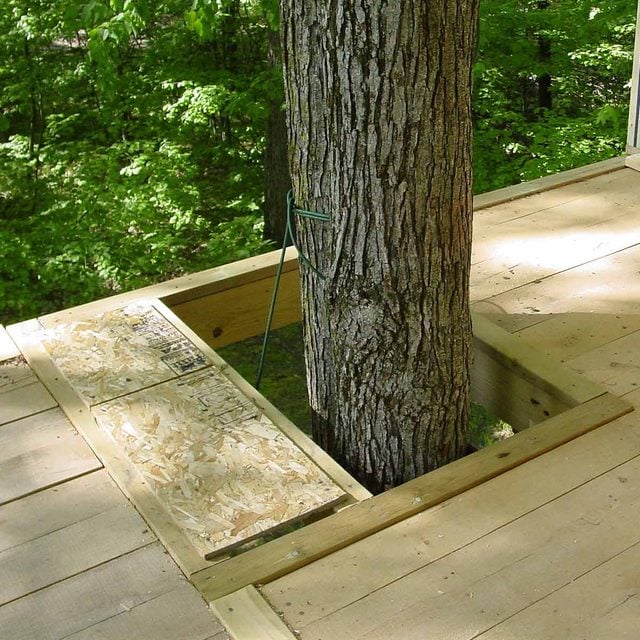 Family Handyman
Family Handyman
Don't Restrict Tree Growth
- Leave gaps around the tree.
- To accommodate tree movement and growth, allow gaps around any branches or trunks that penetrate the tree house.
- Don't constrict branches with rope, straps or wire. This can strangle the tree.
- Add spacers between the beams and the tree to allow movement.
- Use extra-long large bolts. This leaves most of the shaft exposed so you can mount items on the ends and lets the tree grow over the shaft.
- Allow a two-inch gap around the tree if it passes through the floor and a three-inch gap if it passes through the roof (see photo).
4 / 8
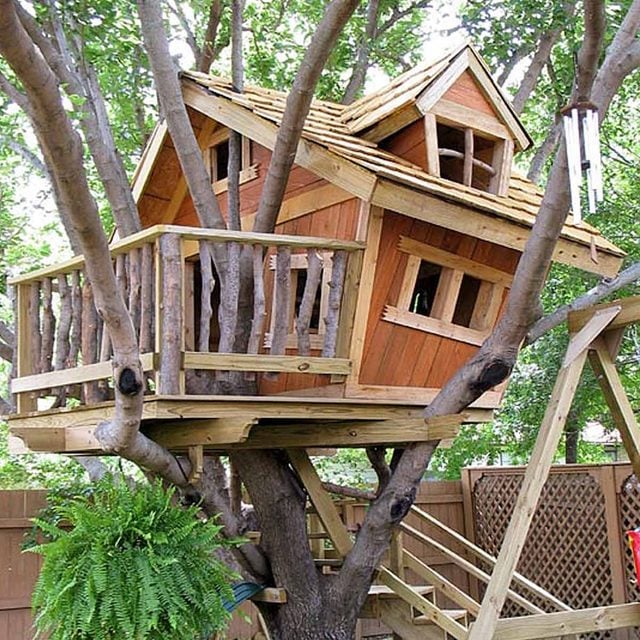 Family Handyman
Family Handyman
How To Level a Treehouse Floor
To keep a large tree house stable, center the load over the trunk and spread the weight among several branches.
It's much easier to build the rest of the structure if the floor is level and can support the entire weight of the tree house. Consider these methods when generating DIY treehouse ideas:
- Lay beams across the branches and shim until level.
- Run the beams between trunks of different trees.
- Cantilever the beams out from a single trunk and support them from above or below.
5 / 8
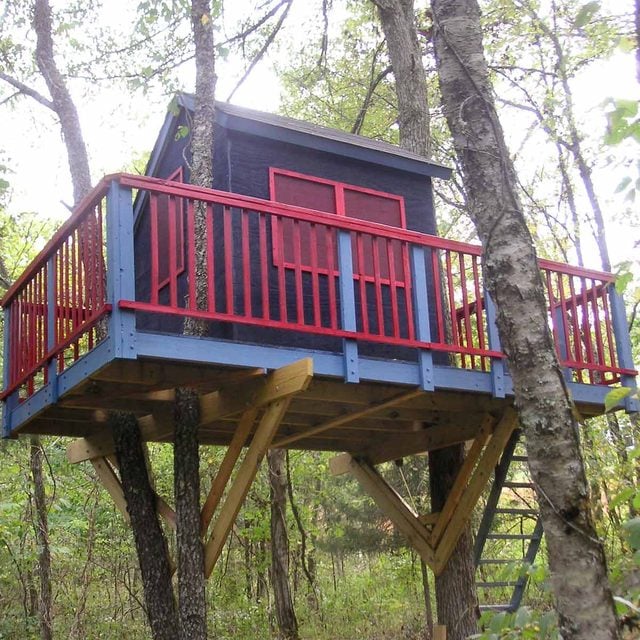 Family Handyman
Family Handyman
Build Sections on the Ground First
It's easier and safer to fabricate the main sections on the ground and then hoist them into position. If branches penetrate areas of the tree house, complete the construction up in the trees.
"I assembled the platform and house on the ground, then disassembled them," said expert Bob Lackey. "After attaching the supports to the trees, I lifted the platform piece by piece and assembled it on the supports. An extra set of hands was needed only to raise the four walls and two roof sections. Final assembly took place in the trees."
Take a look at these great-looking kids room ideas for inspiration.
6 / 8
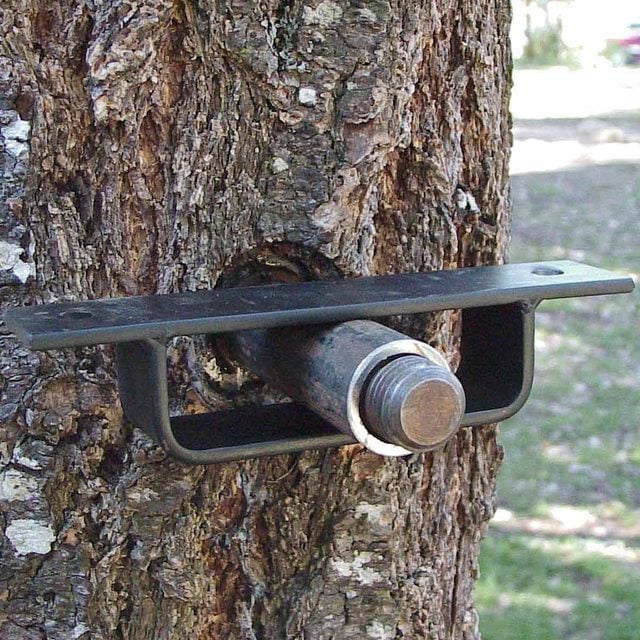 Family Handyman
Family Handyman
Use the Right Fasteners
- Allow for flexible supports, especially if you use more than one tree, so that trees can move in the wind. Special floating brackets allow the tree to sway.
- Don't run bolts through the tree. Lag bolts cause less tree damage than through bolts.
- Don't use too many fasteners. One large bolt is better than many screws or nails. You get the same strength but with fewer puncture wounds to the tree.
- Whenever possible, perch your tree house on top of fasteners rather than pinning beams to the tree. This gives the tree room to move and grow.
- Even for smaller, lighter tree houses where the load is spread over three or four attachment points, consider using one inch or 1-1/4 in. dia. lag bolts.
You can order floating brackets and tree house fasteners from specialty suppliers such as garnierlimbs.com or treehousesupplies.com or special-order them from home centers. These bolts are pricey (about $100 each) and often require special tools. But they allow the tree more room to grow (they can support heavy loads up to five inches from the tree) and they hold more weight than normal bolts.
Let your kid feel like a spy with these awesome spy gadget toys.
7 / 8
Cool Treehouse Accessories You Can Buy (Or Make Yourself)
Don't forget the accessories with your treehouse ideas! Just a couple of finishing touches turn a "box up in a tree" into the ultimate fort and hang-out zone.
Here are some accessories that go great with a treehouse:
- Ball/potato launcher
- Water cannon
- Fire pole or slide
- Trap door
- Solar-powered lights or lanterns
- Fold-down benches and tables.
8 / 8
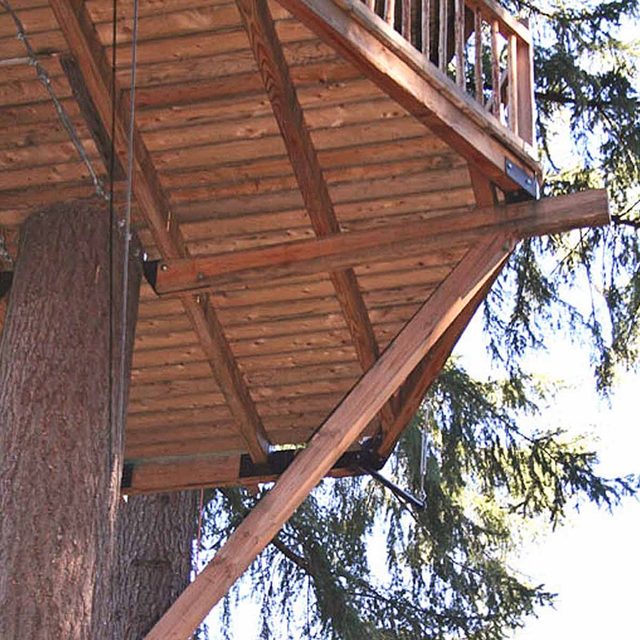 Family Handyman
Family Handyman
Be Conscious of Treehouse Safety Issues
Building a treehouse is a wonderfully whimsical and romantic idea. But it's important to go into it with your eyes open. Keep the following issues in mind:
Tree D amage
Tree houses do damage trees. Foot traffic compresses the soil, which is bad for the roots. Adding weight in the branches can also stress the tree roots, and fasteners can cause infection. Most trees will survive this abuse, but think twice before you build in a treasured tree.
How To Minimize Tree Damage
- Consider using one or two supports ground to take stress off the tree.
- Make the fewest punctures necessary to support the tree house safely. Any damage to the bark of the tree is a potential entry point for disease and bacteria.
- Don't put fasteners too close together, which can weaken that section of the tree. Use at least 3/4 in. bolts spaced at least 18 in. apart vertically and 12 in. apart horizontally.
- Avoid slinging cables and ropes over branches. They cut through the bark as the structure moves.
Neighborhood Concerns and Municipal R egulations
Do you need a building permit? It depends on local laws and the nature of your treehouse. If you're considering building one that will be visible to your neighbors, discuss it with them in advance to avoid problems. Often a municipality becomes involved after a neighbor complains. Stay away from boundary lines and don't build your tree house where it will infringe on a neighbor's privacy.
Injuries
Kids can get hurt playing in a treehouse. Don't build higher than eight feet and make sure to build safe, strong rails. Also, nobody should be in a tree house in high winds or lightning.
Check out these incredible treehouse building plans to get started.
Originally Published: June 18, 2020
Sign up for DIY projects sent right to your inbox
Complete DIY projects like a pro! Sign up for our newsletter!

Subscribe & SAVE 1 Year Subscription
for only $10!
Tree House Built Attached to Back of Aoutdoor Shed
Source: https://www.familyhandyman.com/list/treehouse-building-tips/
0 Response to "Tree House Built Attached to Back of Aoutdoor Shed"
Post a Comment